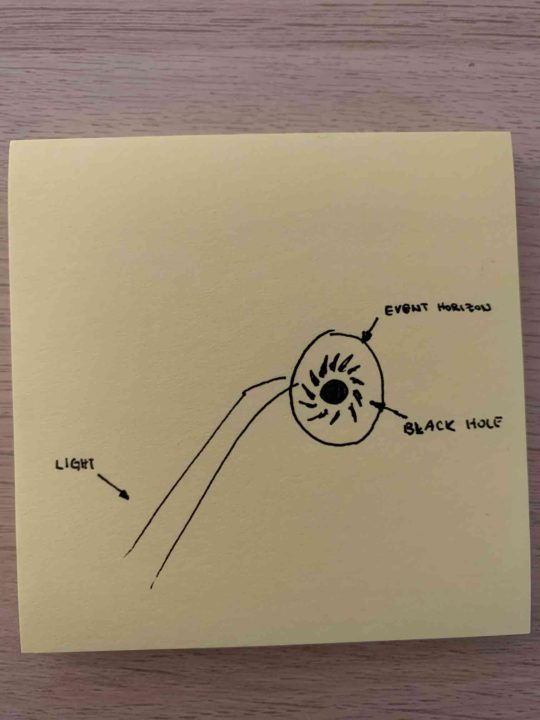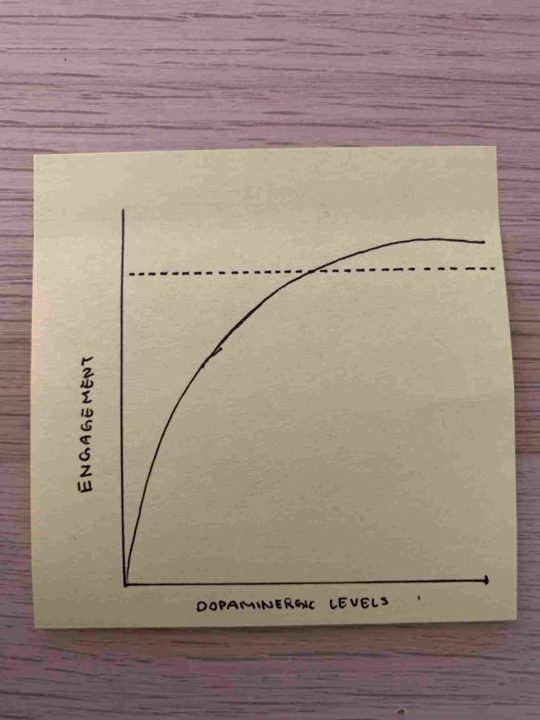If you’re reading this article, chances are you’re no stranger to the many “taxes” that Attention Deficit Hyperactivity Disorder (ADHD) has taken on you. There is the “forgot your homework” tax. There’s the “inability to pay attention in class” tax.
The “left the key in the door again” tax.
The “studying at 12% efficiency tax.
The “smart but unable to fulfill your potential” tax. (quite a painful one)
The “forgot to do taxes”… tax. “
You may have been told by teachers, coworkers, bosses, peers, and even family members that you’re “just lazy” or that you simply need to “apply yourself more.” But, no matter how many cheesy planners, cool tips and tricks, and empty platitudes you use, you’ll find that nothing really seems to stick.
No method really seems to “work.”
But, what if I told you there was a method that can significantly increase your productivity? What if I said there was a technique that can make you faster and more productive than most other people?
It’s possible!
You can certainly acclimate to a normal and even above-average workflow. The method is called the Pomodoro Technique.
However, there’s something quite special about it.
The Pomodoro Technique can SIGNIFICANTLY boost productivity and efficiency VERY QUICKLY for students with ADHD.
But, there’s a catch.
It takes a little bit of time to acclimate to the technique; and, you’ll need to adjust the Pomodoro technique to suit your mind’s work style.
Table of Contents
- What Is the Pomodoro Technique?
- How Does the Pomodoro Technique Work For Students With ADHD?
- How Long Should I Work or Play With the Pomodoro Technique?
- Why “Dopaminergic Activities” Don’t Work With the Pomodoro Technique.
- Using the Pomodoro Method for Children and Students.
Increase Productivity By 200%
- Increase Productivity Within a Week.
- FAST Results.
- 6 Weeks Coaching.
- Professional Productivity and Efficiency Instructors From UPenn, NYU, Cornell, and USC.
- Flexible Payment Options.
Contact us. We'll get to you within 24 hours.
What Is the Pomodoro Technique?

The Pomodoro Technique is a time management strategy that was originally thought to help those who struggled with staying on task and avoiding procrastination. It was meant to break up tasks into smaller chunks of 25-minute intervals, followed by a short break.
In addition, it was originally created by Francesco Cirillo in the late 1980s and based on the tomato-shaped kitchen timer Cirillo used when they were in university.
Today, the Pomodoro method has more flexibility. You can change the length of work intervals, break lengths, frequencies, etc.
Here’s the weird thing, though.
Most people use the Pomodoro method because it “just works bro.” But, we don’t truly understand the many psychological moving parts that go into it.
There’s a lot more the method can do for you than just measuring minutes. Understanding how it can help you, especially if you have ADHD, is going to help tremendously. Seriously.
How Does the Pomodoro Technique Work For Students With ADHD?

There are many ways the Pomodoro technique helps students with their ADHD. The more you understand these study techniques and their influence on your mind, the more effectively you can use the Pomodoro method to maximize your efficiency.
However, we can’t go over every element of ADHD and the Pomodoro method without making this article become a 1200-page epic.
And, seeing as how you, dear reader, may have ADHD, reading such a long text would be torture.
So, we’ll just be going over 2 primary ways the Pomodoro technique can help you study despite ADHD: offshoring your urges, and restoring executive function.
If you would like to learn more about how to use the Pomodoro Technique to rewire your productivity and reshape your life, consider speaking with our expert study coaches for a free consultation!
1. Resisting Urges Through Boundaries.

Here’s a general life dictum.
The less freedom you have, the more free you are.
Keep this in mind throughout this section.
When you use the Pomodoro technique, you’ll start the timer for 25 minutes. When you do, you’ll notice that within that 25 minutes, your mind will conjure a lot of urges.
- I want pizza.
- This is boring, let’s play some video games.
- Let’s look at our phone, there’s so much better stuff to look at.
- I heard some important news in politics is happening; you’d better check the news!
- Let’s open YouTube! Just a quick break can’t hurt… right?
Normally, it’s YOUR responsibility to resist your urges. It’s up to YOU to say no to a bag of chips. This is mentally fatiguing.
But, with the Pomodoro method, It’s NO LONGER your responsibility to resist your urges.
The timer makes the rules.
You work when it tells you to.
You play when it says so.
Thus, it’s harder to give in to urges when the timer calls the shots. By surrendering power to the timer, you’re no longer burdened with having to resist your urges.
- Feeling like pizza? You can’t. The Pomodoro timer hasn’t stopped yet.
- Want to play video games? You can’t. The Pomodoro timer hasn’t stopped yet.
- Feeling the urge to look at your phone? Nope! The Pomodoro timer hasn’t stopped yet.
The mental fatigue of fighting against procrastination is removed because the Pomodoro method sets the boundary of work time for you in the same way a teacher does.
You have no choice but to follow the timer.
So, even if you have urges, they’re shut down by the timer’s boundaries.
Remember: the more you restrict yourself with boundaries, the more free you become.
2. Restoring Executive Function.

Before creating PenningPapers, I worked as a test prep instructor.
As an instructor, I worked with quite a large number of students struggling with ADHD and executive function. Although many of these students were quite smart, quick-minded, and efficient, they also struggled to do what they told themselves to do.
Executive Dysfunction is not an official diagnosis, nor is it defined by the DSM-5. But, Healthline defines it pretty well.
“Executive function describes the cognitive skills, or mental processes, that allow you to do things like:
Healthline —Understanding Executive Dysfunction and How It Shows Up
- pay attention
- absorb, remember, and manipulate new information and sensory input
- stay on task and ignore distractions
- multitask
- regulate emotions
- monitor and adjust your own behavior according to new information or changes in your environment”
Well, in a more casual definition, executive dysfunction can be thought of as this:

In my class, my students KNEW they had to increase their SAT and ACT scores. They KNEW how much work they had. They KNEW how implementing my study methods would increase their scores quickly, giving them an edge in college admissions.
But, they couldn’t follow through.
They couldn’t get their bodies to do what their brains were telling them to do.
Students who struggle with executive function will struggle to execute the very tasks they tell themselves to do, even if its in their own interests.
On a darker note, I’ve had quite a few students openly admit to me that they understood they needed to study and prepare for the SATs and ACTs. But, they just couldn’t push their minds to do exactly that. It was commonly described as “being stuck inside a body that refuses to listen.”
Even neurotypical students struggle with executive function to some degree. In fact, some adults even struggle with it. Take the gym.
Students who struggle with ADHD will have an even more difficult time with executive function.
“Children gradually develop these high-level skills over time, however many children with ADHD have difficulty with these skills. They may demonstrate shortfalls in one or more areas of executive functioning which can cause difficulty in their ability to interact in social situations and succeed academically.”
Psychiatry and Behavioral Sciences –Executive Function: Common Challenges for Children with ADHD
However, not all hope is lost.
The Pomodoro technique works wonderfully for compensating for defecits in executive function.
Here’s how it works.
When the Pomodoro timer indiciates that it is time to switch a task, whether it is to start working or start taking a break, you train yourself to stick only to the given task.
This means NOT giving yourself more break or work time even if its in your own best interest. So, if you feel you can work more efficiently by taking a longer break, don’t. If you feel you can work for longer than 25 minutes, don’t.
By sticking only to the rules that the Pomodoro timer gives, you can effectively follow the rules that the timer gives you rather than following along with the whims and wishes of your impulses.
Once you consistently train yourself to follow the timer on the dot, you’ll condition your mind to favor the timer making decisions rather than intrinsic impulses. Thus, in principle, you’ll train your mind to become better with tasks that require executive function.
How Long Should I Work or Play With the Pomodoro Technique?

When using the Pomodoro technique for ADHD, it’s important to note that students will want to divert from the standard time.
They’ll want make the 25-minute intervals of work longer or shorter. They’ll want to decrease or increase break time. And, they’ll want to add special rules that accommodate for their personal preferences.
Is this good?
Well, yes. But, there’s a catch.
It’s okay to modify the Pomodoro technique to your own personal tastes. But, we highly recommend starting off my following the traditional 25-minute interval format.
This is because you need to train your mind to follow instructions despite internal impulses and urges before you can be ready to make modifications to the method that truly suit your learning style.
Let’s say for instance that you can only work on something for a long period of time if you are intellectually engaged and interested in the topic. If you modify your Pomodoro method to have longer work times to suit your extended engagement, you don’t truly attack the root problem.
The root issue is not working for a long period of time. It’s getting your mind to work when it doesn’t want to.
So, even if you can work on a topic you’re passionate about for long periods of time, you need to train the mind to take a break even if it doesn’t want to. By doing this, you’ll condition your mind to be accustomed to having to take on tasks it doesn’t find appealing.
Why “Dopaminergic Activities” Don’t Work With the Pomodoro Technique.

Dopaminergic activities are activities that increase dopamine levels by stimulating the mind and increasing engagement.
- Going out into the sun.
- Riding a bike.
- Eating healthy foods.
- Meditating.
Nice and healthy.
However, some dopaminergic activities release dopamine in an unhealthy way. They’re often highly-engaging, overstimulating, and likely to make students crash and burn.
- Gorging on cheeseburgers and donuts.
- Most video games.
- Tik Tok and Instagram Reels.
Too stimulating.
These are all dopaminergic activities; and, they’re often addictive.
By engaging in highly dopaminergic activities during breaks, you can’t revert back to work because it changes your reward system and makes work unengaging.
Here’s an article from the University of Washington explaining this in detail.
“Humans crave salty, sugary, and fatty foods such as potato chips, candy, soft drinks, and french fries. When we eat these types of foods, our brains reward us by producing the chemical dopamine, which makes us feel good. If we eat a lot of these rewarding foods, the brain makes more receptors for dopamine. Having more dopamine receptors gives us a tolerance to dopamine that makes us want more junk food to get the same effect.“
University of Washington —Junk Food, Micronutrients, and the Brain
Now, how does this all relate to the Pomodoro technique?
Let’s say you studied for the SATs for 25 minutes. You want a break. So, you have two choices.
- Take a walk outside your house.
- Finish a bag of Doritos while scrolling through Instagram Reels.
The second option overloads your mind to the point where work feels 1000x more boring. This is especially true for students with ADHD.
So, if you’re using the Pomodoro technique for ADHD, you can’t use dopaminergic activities like video games or social media for your breaks because they make it impossible to return to your original tasks.
One way to conceptualize this is through gravity.
I’ve drawn a set of simple diagrams to show how dopaminergic activities pull you away from work. In short, the more stimulating and addictive an activity is, the more your focus can’t “escape.”

Much like a black hole’s event horizon, dopaminergic activities have a “point of no return.” Once an activity becomes too stimulating, engaging, addictive, or fun, there is no amount of motivation that can pull you away.
I’ve conceptualized this in another diagram I drew below.

This explains why you can’t just “get back to work” after playing a video game on your phone. You can’t just eat your vegetables right after gorging on Oreos and Cake.
Now, that begs another question: does that mean I can’t play games, eat cakes, and scroll through social media at all?
And the answer the that is: no!
If you’re using the Pomodoro technique for ADHD, we recommend doing the following:
- Start your day right with mundane tasks such as brushing your teeth, tidying up your bed, doing a skincare routine, and other inconspicuous maintenance tasks.
- Increase the intensity throughout the day by doing harder work like studying or finishing homework midday.
- When taking breaks, do simple activities like exercise, yoga, walking, listening to music without lyrics, or even taking a nap.
- Reserve your highly dopaminergic activities for later into the evening.
- By saving your highly dopaminergic activities like games or social media for the evening, you don’t let them get in the way of productivity and essential activities at the beginning of the day.
In short, put mundane tasks in the morning and dopaminergic activities at night.
Using the Pomodoro Method for Children and Students.

Using the Pomodoro technique for ADHD is a fantastic choice; but, it also works wonders for children and students of all ages.
This is because younger people have a harder time conceptualizing time the same way regular people do. In addition, the ADHD mind experiences time differently from the neurotypical mind.
Often, larger assignments and projects that have accrued over time require many hours of work. And, this time management becomes abstract and obscure the more hours it takes.
That’s why the Pomodoro technique for children and students works so well: it provides a measuring stick for productivity through timed 25-minute intervals.
In addition, the Pomodoro method is great for kids since it conditions their minds to resist urges and develop willpower. This is especially great for younger kids with ADHD who struggle with impulse control.
If you want to learn more about how you can use the Pomodoro technique for ADHD, or wish to learn how to increase your efficiency in school or work, feel free to contact us for a free consultation. Our expert coaches have helped students increase their GPAs by a full point, increase their engagement in class, and help graduates complete tasks on time to turn their life around. We’ll also respond within 24 hours!

